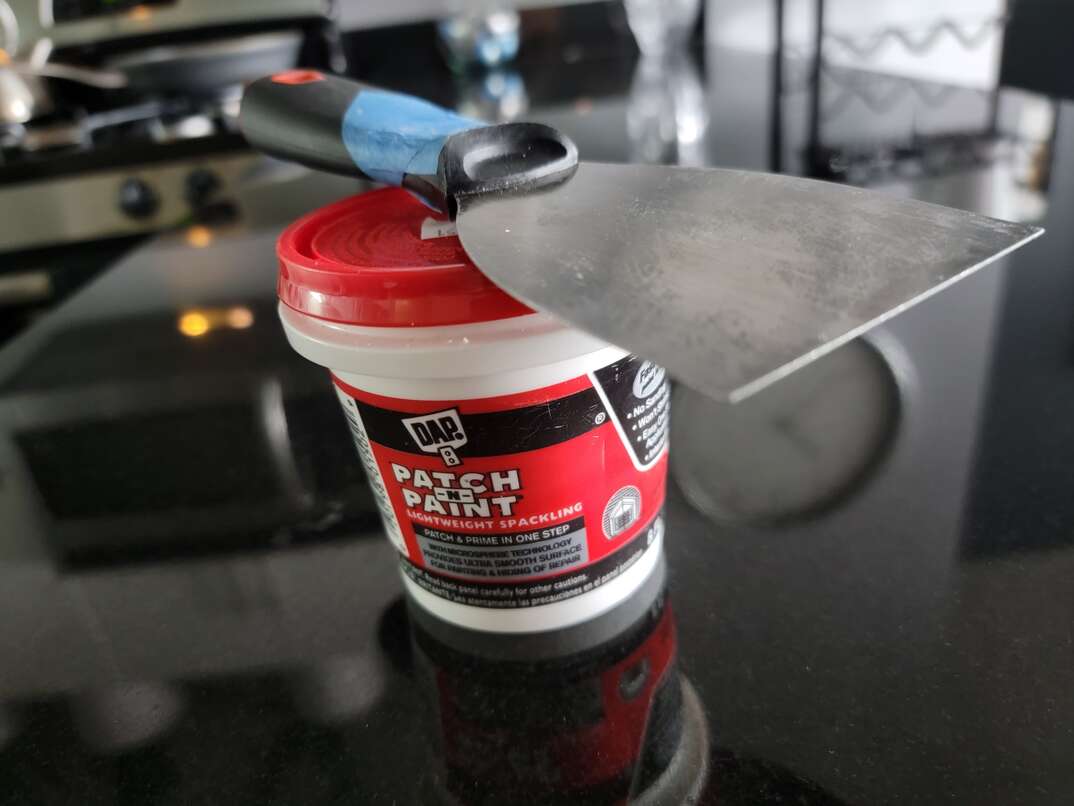What Is Spackle — And How Do You Use It?

If you've been a homeowner for any length of time, you are no doubt familiar with spackle. Along with duct tape and zip ties, it's a true DIYer's friend — erasing blemishes on walls quickly and relatively easily.
This May Also Interest You: What Do Building Codes Mean for DIY Projects?
But if you're not familiar with this wonder paste, this primer will tell you all you need to know about what it is and how to use it effectively for a variety of home projects.
What Is Spackle?
So, first, what exactly is spackle or spackling paste? At its most basic, spackle is a paste made from gypsum powder and other binders. Gypsum is a soft mineral that is often used in building materials such as plaster and wallboard. While it might be possible to find spackle as a dried powder that needs to be mixed with water, it is much more commonly found as a pre-mixed formulation.
There are five basic types of spackle: lightweight,whichisquickdryingandusedforsmallrepairs;all-purposeorstandard,whichdriesharderandisusedforlargerrepairs;vinyl,whichneedstobelayeredandisbestforpatchingdeeperholes;epoxy,whichisanextremelydurableoil-basedproductthatneedstobemixedbeforeusing;and* acrylic*, which is a flexible spackle that can be used not only on drywall but on wood, stone and brick as well.
Lightweight and standard spackles are best used for indoor projects, while vinyl, epoxy and acrylic spackles can be used indoors or out.
What Is It Used For?
Spackle is used to repair small damage in drywall and other surfaces around the home. It can be used to repair cracks, cover up nail holes and smooth over dents in drywall. It can even be used with patching screens to cover up fairly large holes in drywall, although it's not recommended to use the compound for holes much larger than 8 inches in any one direction.
What Spackle Is Not Used For
While spackle is great for addressing a variety of small cracks and holes in a multitude of surfaces, it's not really ideal for handling larger jobs. For that, homeowners usually turn to joint compound, something spackle is often confused with.
While joint compound is also a paste containing gypsum, it has some important differences. Joint compound — or "mud" as it is frequently called — is generally used to smooth out the gaps between drywall boards or cover drywall tape between those boards. Mud has a thinner consistency than spackle, so it can be tricky getting it to stay put in small holes. It also takes longer to dry than spackle, so it's not ideal for quick DIY projects. Still, joint compound can stand in for spackle in a pinch. That said, the reverse isn't true — nor would it be economically feasible. Spackle generally comes in smaller containers, so using it as mud on a large project would be cost-prohibitive.
More Related Articles:
- What Is a Home Improvement Loan and How Do You Get One?
- How to Knock Down a Wall: A Step-by-Step Guide
- Should You Remodel or Move? Here’s How to Decide
- Moving? Renovating? Here’s Everything You Need to Know About Short-Term Storage Costs
- What Do You Need a Property Survey for and How Much Does One Cost?
How to Use Spackle
First, you'll want to make sure that the hole or crack you are filling is clean with smooth edges. For repairs in stonework, this might mean using a can of compressed air or a small paintbrush to get out any small bits of rubble. For drywall, you can use a putty knife to chip away any parts of the hole that are sticking out from the wall. You can also use sandpaper in either situation to remove loose debris.
Once the surface is prepared, it's time to apply the spackle. Do so by getting a bit of compound on the edge of a putty knife and pressing it into the crack or hole at a 45-degree angle. You'll want to work in a feathering motion, making sure to get enough compound into the damaged area but not too much around the edges. Excess spackle can be scraped off the wall using your putty knife at a 90-degree angle.
Then, it's time to let the spackle dry. There are some brands of spackle that will change color to let you know when the compound is dry, but failing that, follow the package directions for the correct amount of time to wait.
Once the patch is dry, you might need to reapply another coat, as it may have fallen into the crack or hole as it dried. If so, add what you need using the same technique detailed above and wait for the appropriate drying time.
Once the spackle is dry, use a fine-grit sandpaper to sand the entire surface until any "proud" areas of the spackle are lowered and made even with the rest of the wall. Use a slightly damp cloth to wipe the area. Let dry, and then paint using the same paint that was originally used for the wall for a nearly invisible patch job.
Spackle Success
Now that you know a little more about spackle, you may wonder how you ever lived without it. It's always a good idea to keep some all-purpose spackle around to deal with those pesky holes left behind when you remove a piece of art from the wall, or when you ding the wall with a chair that's pushed back too enthusiastically. Happy spackling!


